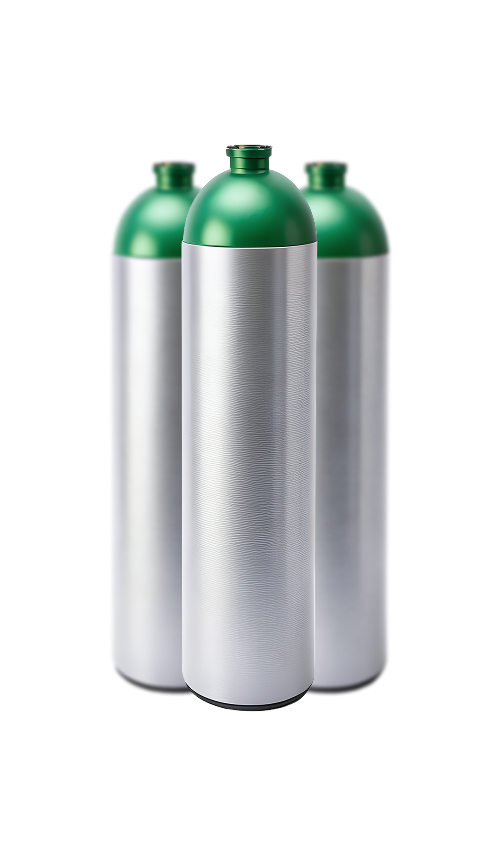
DOT 3AL
Water Capacity: 2.9 - 4.6 L
Diameter: 111 mm (4.37 in)
Height: 436 mm / 658 mm (17.17 in / 25.9 in)
Min. Wall Thickness: 5 mm (0.2 in)
Working Pressure: 13.9 MPa (2015 psi)
Test Pressure: 23.2 MPa (3364 psi)
Material: AA6061 Aluminum Alloy
Our DOT-3AL Seamless Aluminum Cylinders provide lightweight, corrosion-resistant storage for medical and specialty gases. Built from high-strength AA6061 aluminum and tested under DOT-3AL standards, they ensure consistent performance, precision tolerances, and exceptional durability.

Aluminum cylinders are significantly lighter while maintaining high strength and safety. They also offer superior corrosion resistance, making them ideal for medical and portable applications where weight and cleanliness matter.
They are suitable for medical oxygen, industrial oxygen, calibration gases, nitrogen, argon, and other non-corrosive gases. For specific compatibility, always refer to gas supplier or safety data sheet (SDS) recommendations.
Yes. Our cylinders are manufactured and tested under DOT-3AL standards and accepted in multiple international markets. Additional certifications (ISO, TPED, EN) can be provided depending on destination and local regulations.
With proper handling and periodic testing, DOT-3AL aluminum cylinders can last over 15–20 years. Re-qualification and hydrostatic testing intervals follow DOT or local authority guidelines, typically every 5 years.
Yes. They are designed for multiple filling cycles and long-term reuse, provided they pass regular inspections and are serviced by certified facilities.
Currently available in 2.9 L (MD) and 4.6 L (ME) water capacities. Custom volumes and valve configurations can be supplied upon request.
Cylinders can be supplied with or without valves depending on client requirements. We offer compatible Harrison, CGA, and DIN valve types for both medical and industrial applications.
Standard production and delivery are completed within 35–40 days, depending on order volume and configuration.
Keep cylinders clean, dry, and protected from physical impact. Avoid contact with oils or hydrocarbons in oxygen service. Follow standard DOT/ISO maintenance and re-inspection procedures.